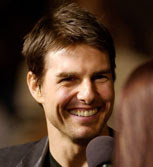Search This Blog
Official website of Annakarinaland , broadcast on KXSF.fm San Francisco Community Radio Focus on Women and Film. Published reviews and scholarly writing of film critic Moira Jean Sullivan
Posts
Showing posts from 2006
The Twelve Days of Cochina: Marga Gomez at Theatre Rhinoceros, San Francisco.
- Get link
- X
- Other Apps
Welcome CinéFemme Back to Paris and Cineffable!
- Get link
- X
- Other Apps
Cannes Gives Andrea Arnold Special Jury Prize
- Get link
- X
- Other Apps
Leonardo Who ? or Symbols of the Sacred Feminine
- Get link
- X
- Other Apps
Jane Birkin at Créteil Films de Femmes
- Get link
- X
- Other Apps
Long before the Oscars were the BAFTA's--and they chose Brokeback Mountain!
- Get link
- X
- Other Apps
"I'm not a lesbian but my girlfriend is...."
- Get link
- X
- Other Apps
Master Executioner of Sharks and Humans
- Get link
- X
- Other Apps


